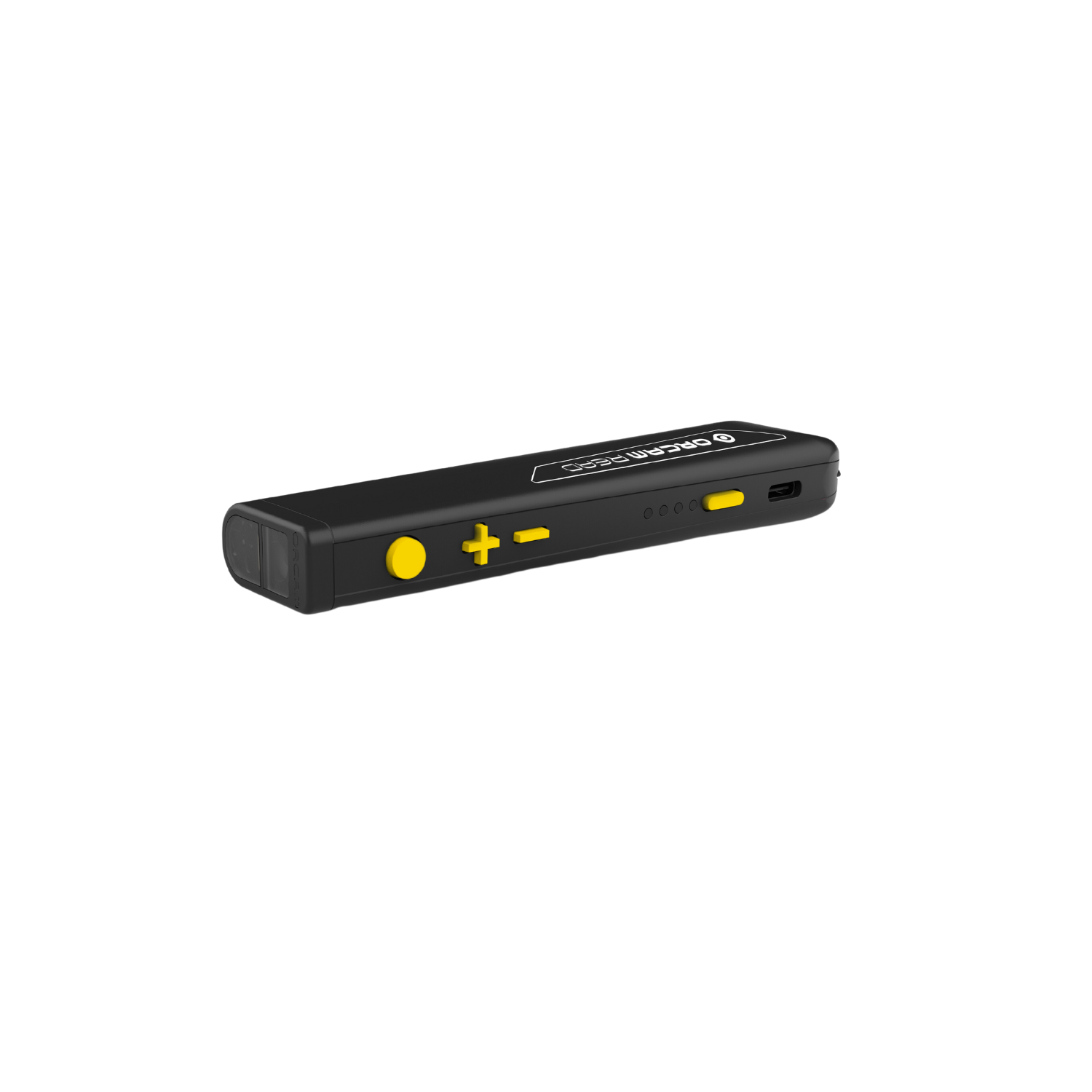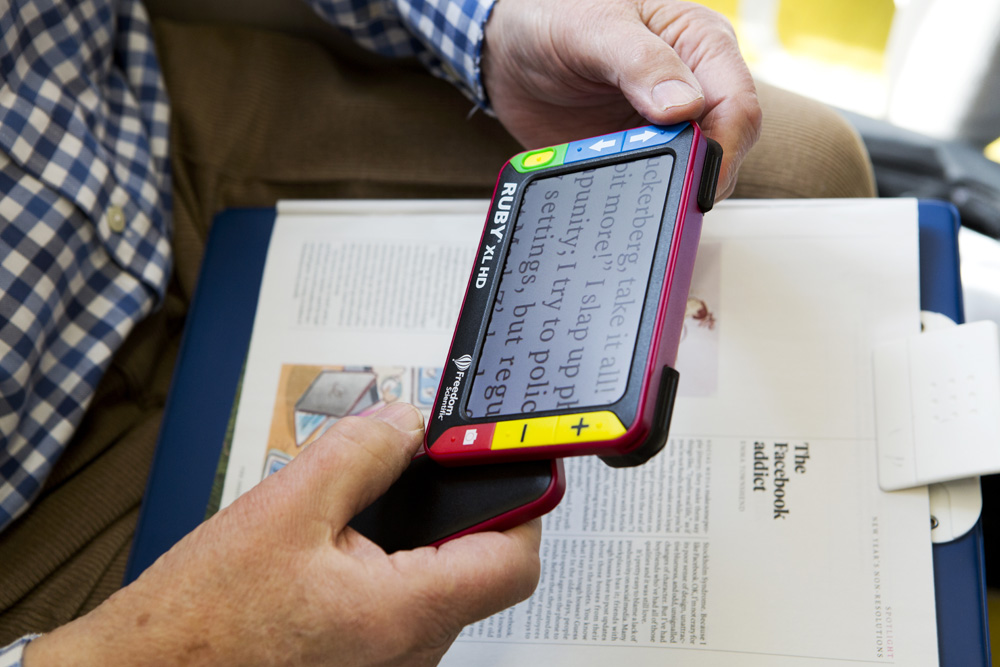Braille Displays and Notetakers: Must-Have Tools for Learning and Work
Braille Displays and Notetakers: Must-Have Tools for Learning and Work
Blog Article
Discover Innovative Tools Created for the Aesthetically Impaired
The development of innovative devices for the aesthetically impaired represents a significant improvement in ease of access and independence. Technologies such as wise glasses with AI abilities and mobile applications developed to provide acoustic descriptions are improving day-to-day experiences for users.
Smart Glasses for Navigating

Smart glasses made for navigating are revolutionizing the way visually damaged people communicate with their atmosphere. These innovative tools use a combination of cam technology, expert system, and acoustic responses to provide real-time information about environments. By utilizing barrier detection systems, clever glasses can signal users to possible dangers, making it possible for safer mobility in both acquainted and unfamiliar settings.
The integration of GPS technology further boosts navigating abilities, permitting individuals to receive acoustic directions as they relocate. This hands-free method not only cultivates independence yet additionally encourages aesthetically damaged individuals to browse metropolitan landscapes with boosted self-confidence. Additionally, numerous clever glasses are geared up with functions that determine spots and road indicators, giving contextual information that improves the customer experience.
In addition, the advancement of these tools is constantly advancing, with companies working to boost the precision of item recognition and broaden the variety of navigational attributes. As smart glasses come to be much more accessible and budget-friendly, they hold the prospective to dramatically transform life for visually damaged users. Eventually, these innovative devices stand for an essential action toward inclusivity, offering enhanced movement and a better sense of autonomy for people navigating the globe around them.

Mobile Apps for Daily Living
Just how can mobile applications enhance the every day lives of visually damaged individuals? Mobile apps are revolutionizing the method aesthetically impaired customers browse their atmospheres, handle daily jobs, and gain access to details. These applications offer necessary support via different capabilities, promoting self-reliance and enhancing lifestyle.
Several innovative mobile apps are created especially for day-to-day living. As an example, apps like Be My Eyes attach visually impaired customers with sighted volunteers via video telephone calls, enabling them to get real-time aid with tasks such as reviewing labels or navigating strange rooms. Likewise, Seeing AI, created by Microsoft, uses expert system to explain environments, reviewed message, and recognize objects, properly changing a smartphone right into a powerful tool for everyday help.
Additionally, navigating applications customized for the visually damaged, such as Aira and BlindSquare, use audio-based instructions and environmental details, making it possible for individuals to traverse their environments securely and confidently. Past navigation and immediate help, mobile apps also sustain company and job management, with functions that aid customers set reminders, produce to-do lists, and track visits. In recap, mobile applications act as important resources, encouraging aesthetically damaged people to lead even more independent and meeting lives.
Wearable Technologies for Support
Empowerment through technology is significantly evident in the world of wearable tools designed to assist visually damaged individuals. These cutting-edge tools integrate seamlessly right into everyday life, improving navigating and providing important feedback to individuals. For instance, smart glasses furnished with cameras can identify faces and check out text aloud, enabling customers to connect even more with confidence in social and expert settings.
Another notable development is using haptic comments systems in wearable devices. These systems use vibrations or various other tactile signals to convey info about the user's environment, such as barriers or modifications in surface, enhancing flexibility and security. Wearable modern technologies likewise consist of wristbands that connect to smart devices, alerting customers to notifications through refined vibrations, hence improving connectivity without reliance on visual cues.
As these modern technologies remain to advance, they are not only improving freedom for aesthetically impaired people but additionally fostering a better sense of incorporation in culture. By bridging the void between challenges dealt with in day-to-day living and the capacity for freedom, wearable technologies act as essential devices in the quest for equal rights and empowerment for those with aesthetic disabilities.
Audio Description Tools
Audio summary tools play a crucial role in improving availability for visually damaged individuals, supplying them with the capability to involve with aesthetic media. OCR devices for the blind. These tools use narrated summaries of key aesthetic elements in movies, tv shows, and live efficiencies, guaranteeing that individuals can totally comprehend the context and emotions conveyed with visuals
Sound summary can be integrated right into different systems, including streaming solutions, movie theater testings, and live cinema. Many prominent streaming services currently consist of audio summary as an accessibility attribute, allowing viewers to select it quickly. In enhancement to conventional media, specialized applications likewise exist, offering audio summaries for art exhibitions, museums, and various other cultural occasions.
The efficiency of audio summary depends upon the ability of the storytellers, that have to convey visual information succinctly without diminishing the original sound. Advancements in this field are likewise leading the way for more customized experiences, where individuals can adjust the degree of detail and pacing according to their choices.
Braille Innovations and Tools
Braille devices read this post here and developments have actually dramatically changed the way visually damaged people communicate with message and details. Modern innovations have actually resulted in the advancement of flexible tools that boost literacy and independence among users. Especially, Braille display modern technologies have developed, permitting vibrant reading experiences. These gadgets convert digital text right into Braille, allowing users to access a vast variety of information on tablets, computers, and mobile phones.
Additionally, portable Braille notetakers integrate typical Braille input with modern-day functionalities, helping with note-taking, organizing, and file editing on the move. Wearable technology for low vision. These compact tools usually feature text-to-speech capabilities, linking the space in between Braille and auditory info
On top of that, cutting-edge Braille printers have actually arised, enabling customers to produce Braille labels, files, and academic products effectively. This ease of access cultivates greater engagement in instructional and specialist settings, eventually advertising inclusivity.
Furthermore, study into smart Braille innovations remains to expand. Instruments that include expert system are being discovered to supply real-time navigating help and contextual info, improving the customer experience official site in varied setups. Generally, these advancements reflect a dedication to encouraging visually damaged individuals through innovation, ensuring they can quickly gain access to and engage with the world around them.

Conclusion
The development of ingenious devices for the visually impaired significantly boosts freedom and top quality of life. These innovations not just foster better inclusion but also advertise autonomy in everyday activities, inevitably contributing to a more fair and available culture for visually impaired people.
As wise glasses become more budget-friendly and easily accessible, they hold the potential to dramatically change everyday life for aesthetically impaired users. Mobile apps are revolutionizing the way visually damaged users navigate their environments, take care of daily jobs, and access info. Apps like Be My Eyes connect visually damaged customers with sighted volunteers by means of video clip calls, enabling them to get real-time support with jobs such as checking out tags or browsing unfamiliar areas.Additionally, navigation apps tailored for the aesthetically impaired, such as Aira and BlindSquare, offer audio-based instructions and ecological details, allowing users to traverse their surroundings securely and with confidence.The improvement of ingenious tools for the visually damaged significantly improves independence and Read Full Report top quality of life.
Report this page